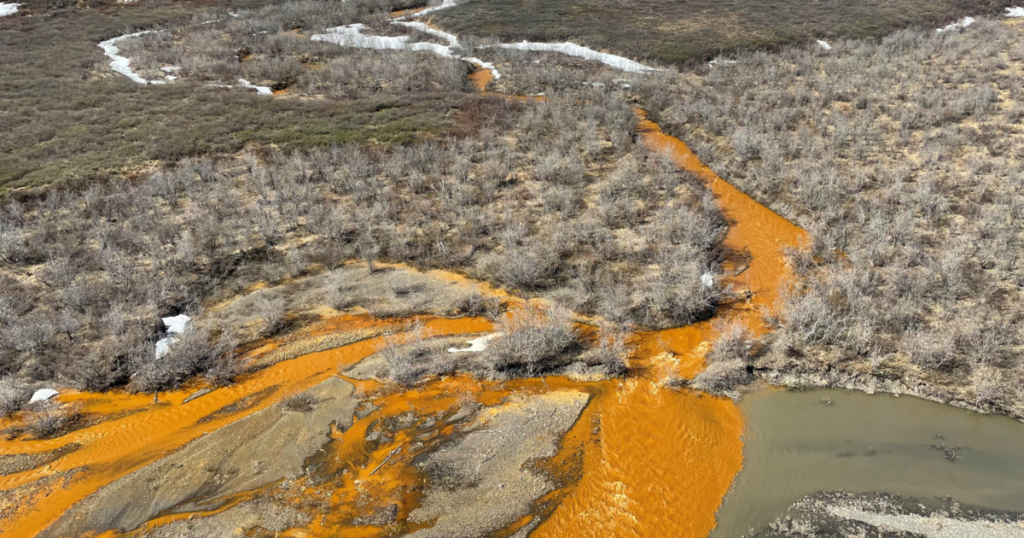Researchers have been seeing orange rivers and streams across Alaska for years, and new research suggests that climate change is a major factor. As permafrost thaws in the region, it releases minerals into the water, causing the drastic color change. This change could potentially threaten drinking water and fisheries in the affected areas. The impacted water is found in federal lands, including Gates of the Arctic and Kobuk Valley national parks. Scientists have sampled affected water across a large area of northern Alaska’s Brooks mountain range, some of which are so remote that helicopters are needed to access them. Satellite images have shown the stained areas dating back to 2008, indicating that the issue has been slowly propagating over time.
The orange water is believed to be a result of metal ores released from permafrost due to warming temperatures. When these minerals come into contact with water and oxygen, they release acid and metals, resulting in the orange coloration. Samples have shown elevated levels of iron, zinc, nickel, copper, and cadmium in the impacted water, with iron being one of the dominant colors causing the orange hue. Some water samples have tested as significantly more acidic compared to the average pH of rivers, which could have negative implications for the aquatic life in the affected waters.
Researchers are still trying to understand the implications of the colored water on fishing stocks and drinking water. The study has noted that the discoloration of streams is linked to declines in macroinvertebrate diversity and fish abundance, which could threaten the fish populations critical for subsistence, sport, and commercial fisheries in Alaska’s Arctic rivers. The presence of toxic metals in the water could also pose a threat to rural drinking supplies, potentially impacting water quality and taste. As the climate continues to warm, the thawing of permafrost is expected to continue, leading to more orange rivers and potential degradation of water quality in affected areas. Research is ongoing to study if the rivers and streams can rebound if cold weather promotes permafrost recovery.
Researchers are particularly concerned about the impact of the orange water on fish populations in Alaska’s Arctic rivers, as well as the potential threat to drinking water supplies for rural communities. The study highlights the need for further research to understand the long-term effects of climate change on water quality and aquatic life in the region. Understanding these effects is crucial for developing strategies to mitigate the impact of permafrost thaw on Alaska’s water resources. Scientists are also exploring whether cold weather can promote permafrost recovery and potentially help the rivers and streams rebound from the current color changes caused by mineral release.


